
Before the advent of the Tartan Army and the perfection of the art of losing gracefully, the Jacobites, under the Earl of Marr burned down the town after losing the Battle of Sheriffmuir in 1715. The towns folk for some reason or another planted a thorn tree as a reminder of what happens when you loose disgracefully. The tree survived until 1936 but has been replaced since, to celebrate the coronation of George VI and Queen Elizabeth in 1937 and has been replaced again since. They don't make trees like they used to!
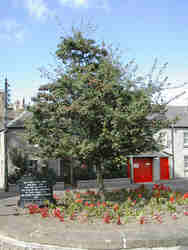 The thorn tree
The thorn tree
The Dupplin Stone spent hundreds of years on a hill side overlooking Dunning. The stone and its socket were removed from the hillside and placed under cover in St. Serfs Church, Dunning which is also in the care of Historic Scotland.
This magnificent cross marks the transition period between the last of the Picts and the beginning of the Christian Kings of Scotland. A latin inscription on the back of the cross mentions King Constantine Mac Fergus the first king of a united Scotland.
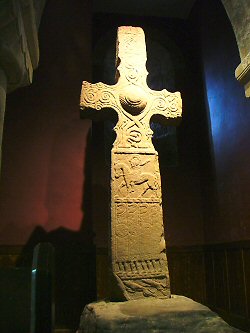 Dupplin Cross
Dupplin Cross
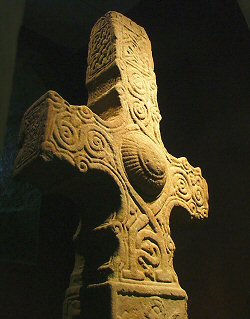
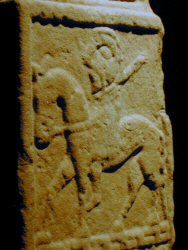 What is thought to be Constantine
Mac Fergus upon a horse
What is thought to be Constantine
Mac Fergus upon a horse
The next piece of trivia is the standing stone. This standing stone is thought to be the burial place of the Maormor of Atholl AD. 964. Killed at the battle of Duncrub.
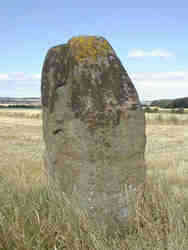 Standing stone
Standing stone
This is the oldest headstone in St. Serfs Church, it dates to 1623, not very big but the face carved upon the stone is a lovely mystery.
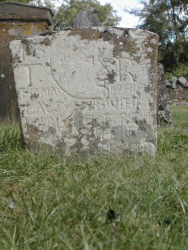 Dunning grave stone
Dunning grave stone
This one is a bit of a mystery. There seems to be no record of a Maggie Wall being burnt as a witch in the area. However .....Never let the Truth get in the way of a good story.
BBC Scotland, Where I Live has a good web page detailing what is know about this memorial
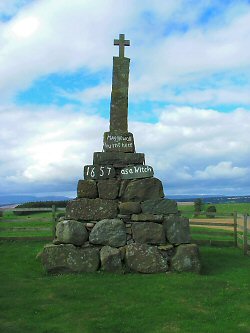 Maggie Wall memorial
Maggie Wall memorial
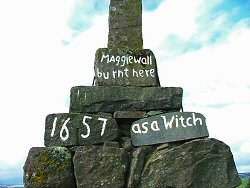 Maggie Wall memorial
Maggie Wall memorial
A little way up the dyke from the memorial is this little gem. I do not know what stately home this refers to, perhaps Duncrub. The lower stone bears the inscription, "H.R. BLT THIS PARK 1722."
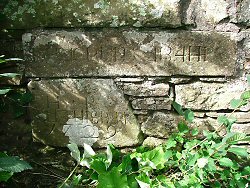 Park stones
Park stones
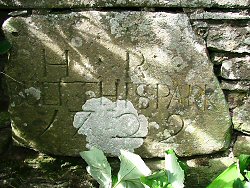 Park stones
Park stones